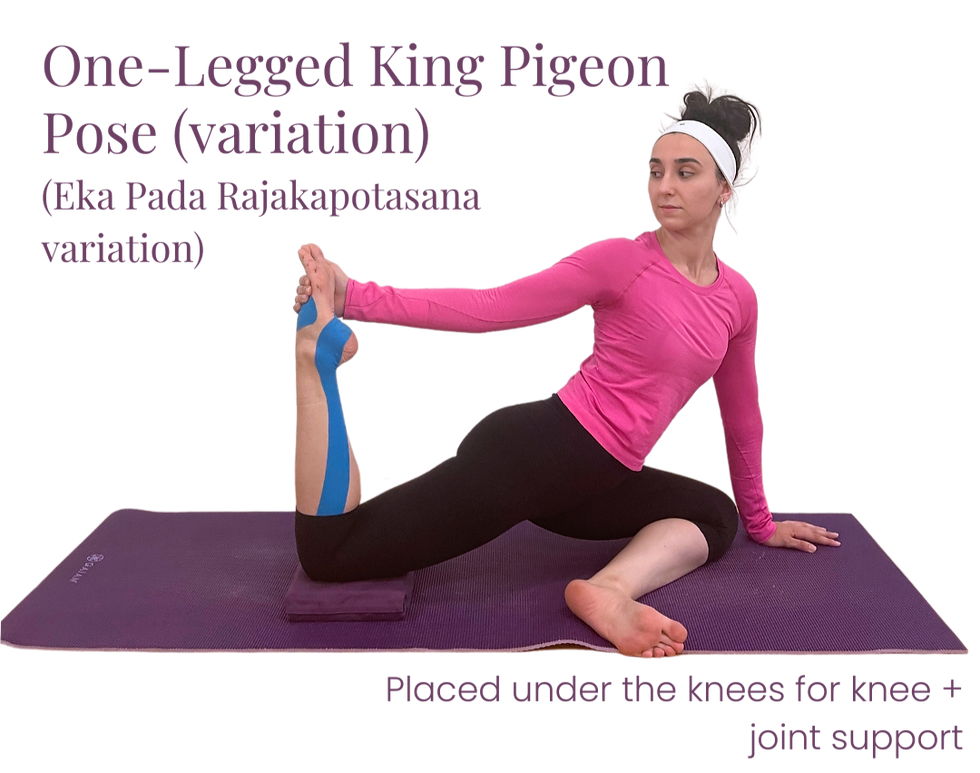In this blog, we'll explore the many creative uses of chip foam blocks by adding these soft props to your sequence, enriching your yoga practice!
What are chip foam blocks?
These soft, cushioned flat blocks are a staple in nearly every practice and are perfect for adding a little bit of cushion and bounce to a firm foundation. Unlike other blocks, these look slightly different as they're typically made of recycled chip foam that is reconstituted into flat rectangular shapes. However, don't be fooled by their soft cushion; these flat blocks are one of the most versatile props that can aid you in nearly every style of Yoga.
When should I use a chip foam block?
Deciding when to use a chip foam block (-or any Yoga prop) is completely up to you. Your decision to use a prop may depend on the Asana (i.e., pose) you're in, your comfort level with props, the style of yoga you're sequencing, and so on. For example, you likely wouldn't want to use a chip foam block in a hot Yoga class focused on single-leg balancing poses given how porous and flexible the material is - you would want to opt-out for something more firm and sturdy, such as a wooden block.
In Yoga, a source of frequent discomfort arises when we place our body weight on our joints. Think of poses where your joints and bones are closest to the earth; now, add a chip foam block between you and your mat. Here are a few examples of how a chip foam block can be used in your practice to alleviate pressure.
Tabletop Pose (Bharmanasana)

A simple adjustment and addition to elevate your tabletop pose (whether you're heading into a cat-cow, bird-dog, child's pose, and so on) is placing a chip foam block beneath each of your knees for cushioned joint support. This simple addition will ease the pressure of your body weight coming directly down onto your knees, making for a more comfortable, accessible, and enjoyable pose. (Tip: tuck your toes here for extra stability and support!)
One-Legged King Pigeon Pose (Eka Pada Rajakapotasana variation)

Similar to tabletop, knee support is also beneficial when coming into binds and pressure is being applied to the joints at different angles. As you can see pictured on the left, in this variation of the one-legged king pigeon pose, the pressure of body weight is not coming straight down on the knee but at an angle. Sliding a chip foam block beneath the knee here makes the bind easier to come into and easier to hold for an extended period of time.
Sleeping Swan Pose (Adho Mukha Kapotasana)

Chip foam blocks aren't just useful for the knees; they can also support the hips and sit bones! Double up on your chip foam blocks and place them underneath your sit bone - not only will this extra cushion make for a cozy practice, but it will also help alleviate any strain you may experience in the upper thigh (i.e., upper groin) area without the support. When coming into deep stretches, the goal is to find the "edge" of a stretch (i.e., the most desirable point in the stretch), as there should never be any pain or strain as this can lead to injury.
Plough Pose (Halasana)

The upper back area (i.e., the scapulas) can be a sensitive spot to bear body weight, especially on a hard surface. In plough pose (-and poses alike, e.g., snail pose, shoulder stand, etc.), placing two chip foam blocks side-by-side beneath your scapulas softens your foundation and makes the pose easier to come into, hold, and come out of. Next time you come into a weight-bearing pose on the scapulas, consider using a couple of chip foam blocks beneath them to soften your foundation. (Tip: place your chip foam blocks under the scapulas, not the neck!)
Where can I buy chip foam blocks?*
You can find chip foam blocks at any online yoga store equipment retailer or perhaps your local yoga studio. My personal favourite is from b, half-moon (formerly Halfmoon) - they sell a high-quality chip foam block with the option for removable/washable covers. I absolutely love mine and have had them for years, you can check them out here!
Happy practicing!
Erika Ileana, RYT & RPYT
Restore to Rest | restoretorest.ca | IG: @restoretorest
*As of publishing this article on July 10th, 2024, none of the products or brands mentioned in this blog were sponsored.


Comments